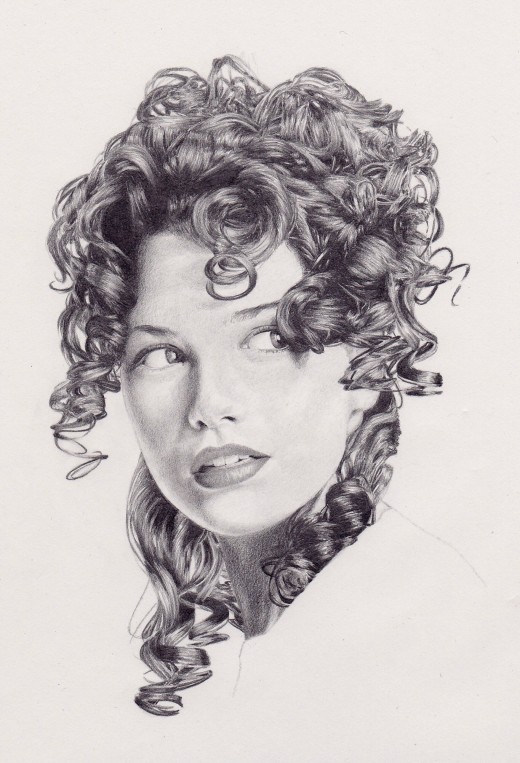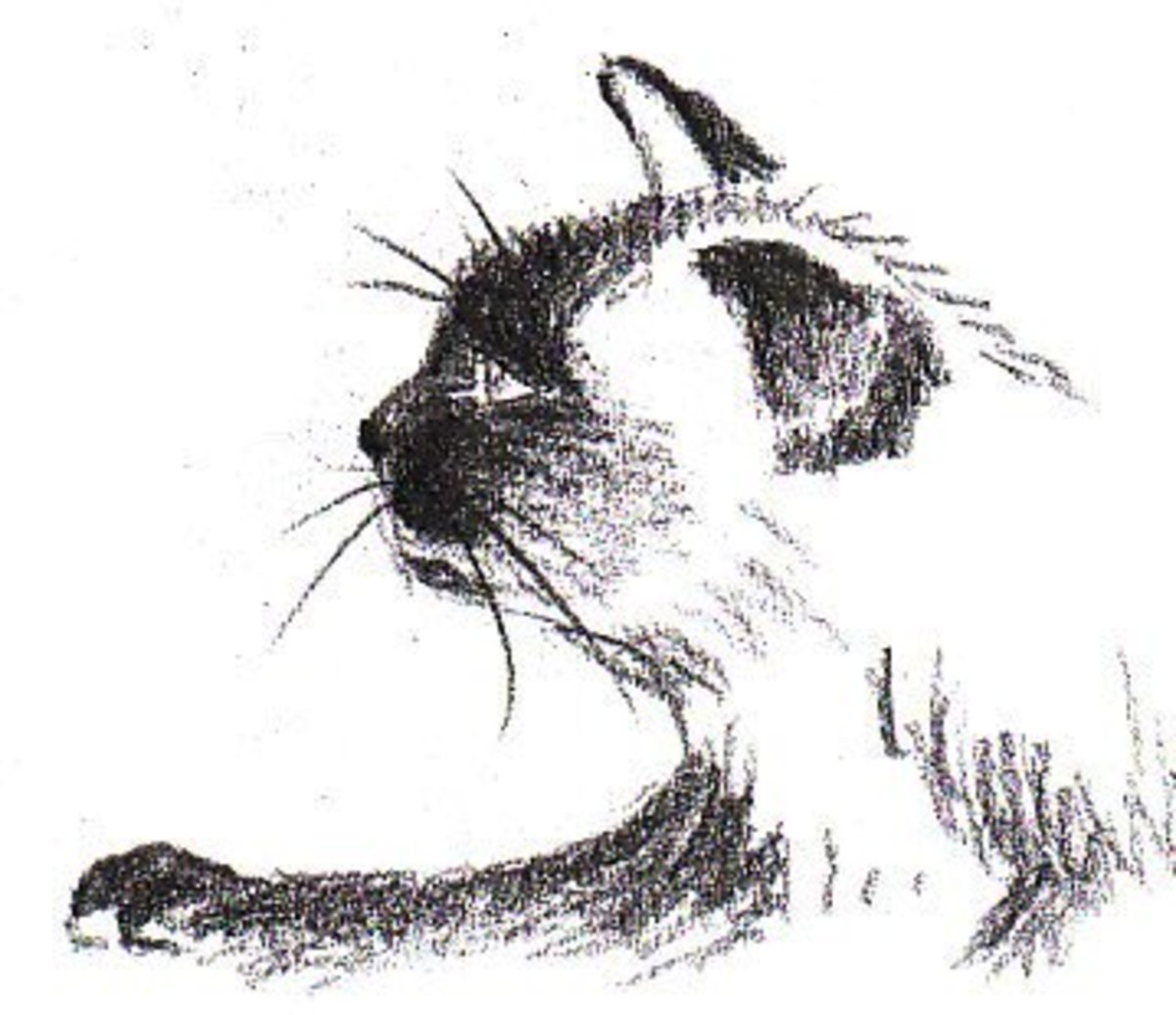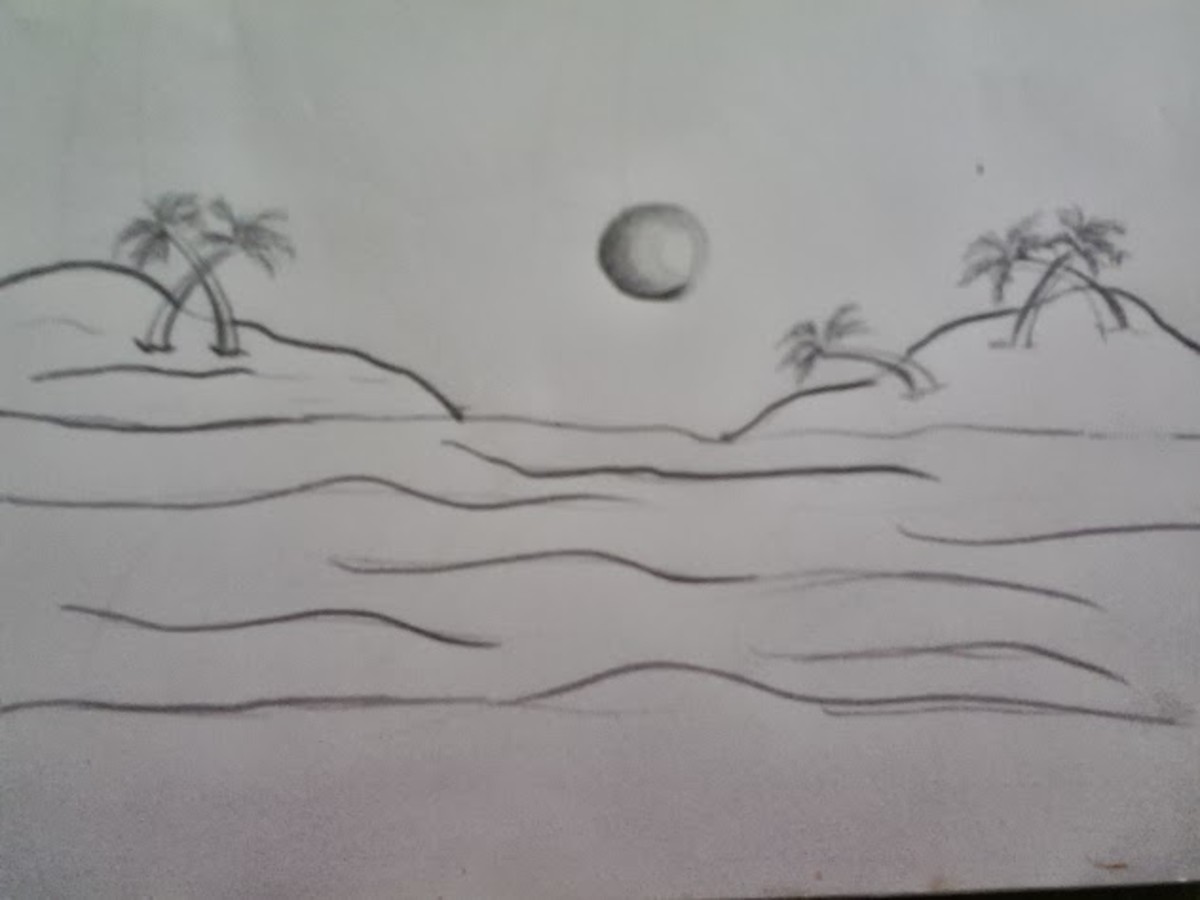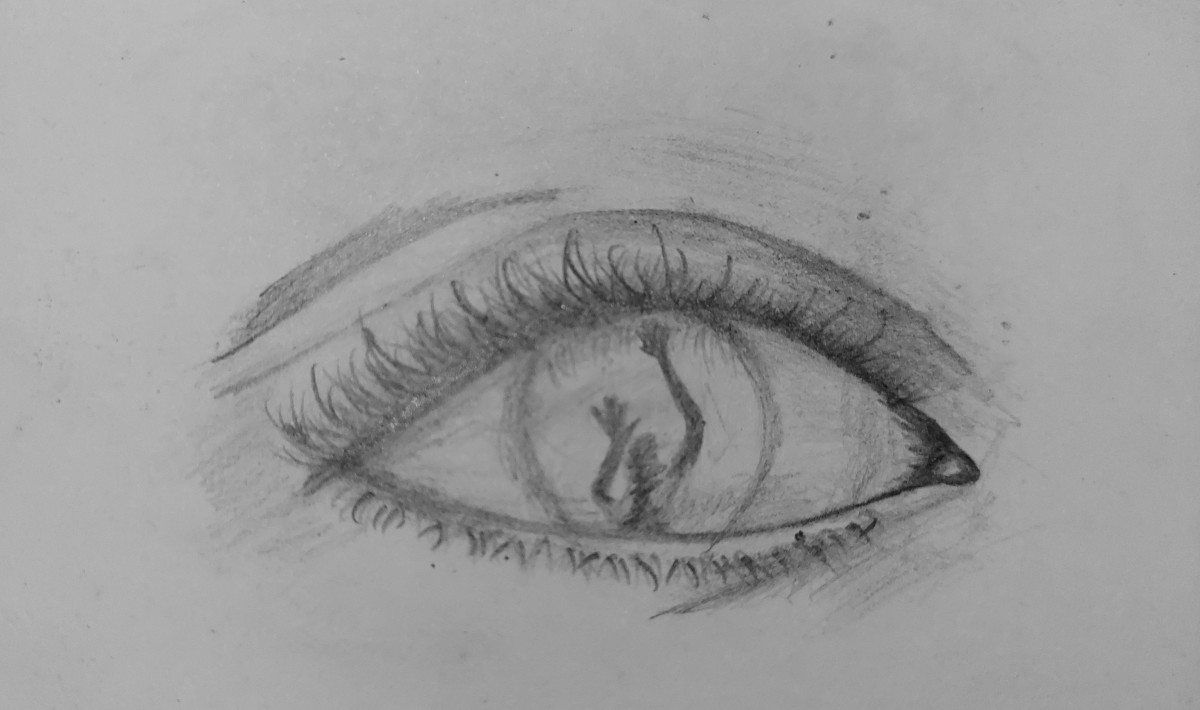Step by Step Tips On Portraiture From An Amateur
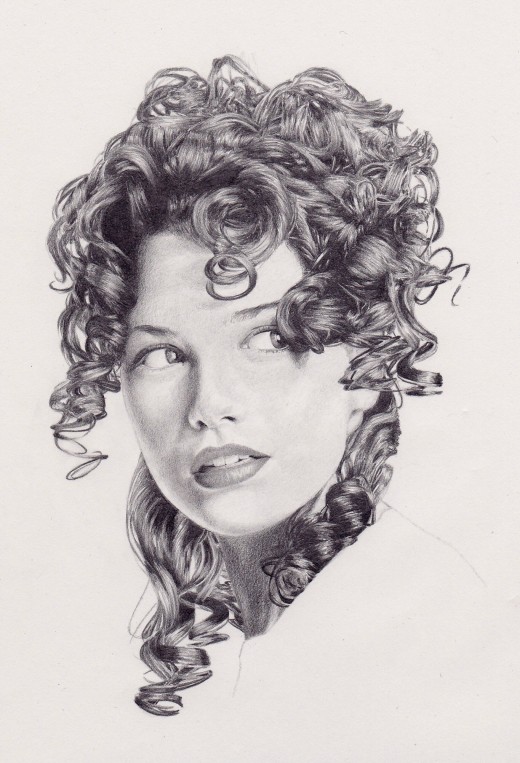
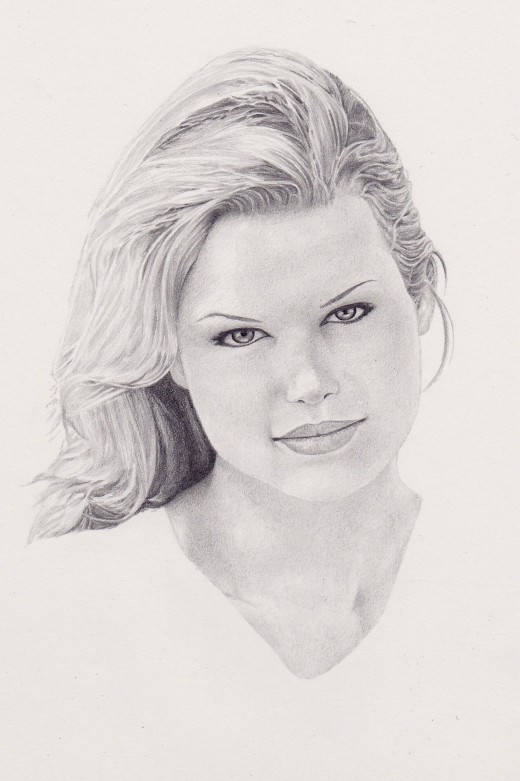
Where To Begin
Most (if not all) art instructors counsel beginning with an outline drawing of the human head with specifically measured out positions for all the features of the face and head. Many professionals and amateurs like myself, however, often have their own way of beginning a portrait. If working from a photograph, many like to put together an outline based on and often traced out from the photograph in order to lay a foundation for the subject’s facial topography, particularly if accuracy is an issue. Others just pick a point on the face and start drawing, working out the topography along the way. From what I’ve seen, working point to point is often done with live portraits. I’ve done portraits with and without outlines. Lately, I prefer to use outlines or topographical markers to save time. Once principle drawing begins, the first features done are usually the eyes
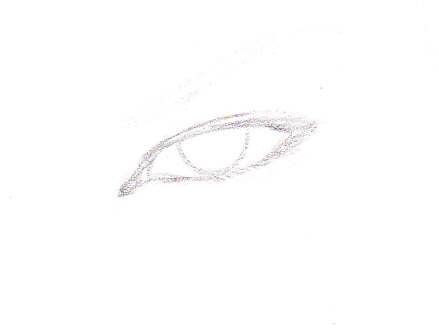
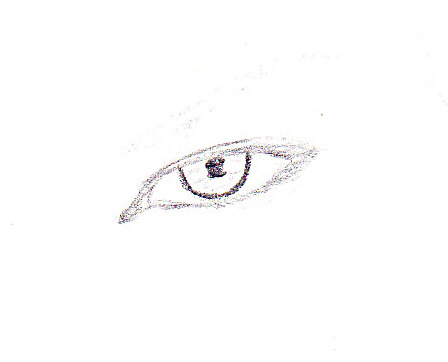
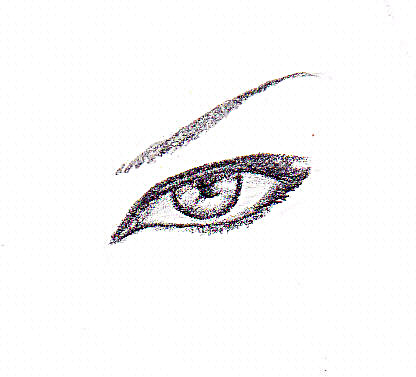
The Eyes
First, set up an outline of the eye beginning with the lids and lashes including the fold above the eyelid (if there is one). Continue inward to the circle of the iris. Once the outline of the eye is completed, take note of the location, shape, and brightness of the highlights (if there are any) in the eye. Leave yourself faint markers or outlines in the shape and location of the highlight(s). Since the iris and pupil of the eye are actually physically behind the highlight, you’ll want to draw them around the shape of the highlight markers. Once ready to start principle drawing on the eye, I’ve always found it best to work from the inside out. Preferably with a darker grade of pencil, begin with the pupil in the center of the iris. Remember the markers or outlines for the shape of the highlights. Everything within the circle of the iris should be drawn around the highlight outlines. Once the pupil is done, darken the circle of the iris. Then fill in the space between the pupil and the circle of the eye with straight strokes radiating outward from the circle of the eye. Make the darkness or lightness of the strokes according to the color of the eye. Then fade the darkness of the circle of the eye inward toward the pupil. Do the same with the darkness of the pupil outward toward the circle of the eye. Very lightly shade the highlights to match what is seen in the eye. This way, they don’t just look like a couple of white, empty patches in the eye. Next, adjust the darkness around the rest of the eye (eye lashes, lid, etc.) and begin the eye brow. You can darken or lighten the eye brow as you work out the skin tones around the eyes. When these steps are completed, you can repeat the same steps for the other eye.
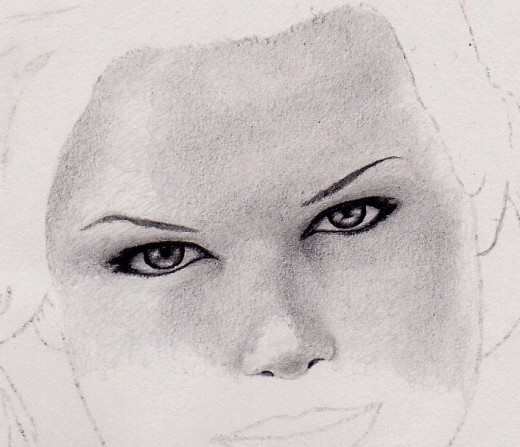
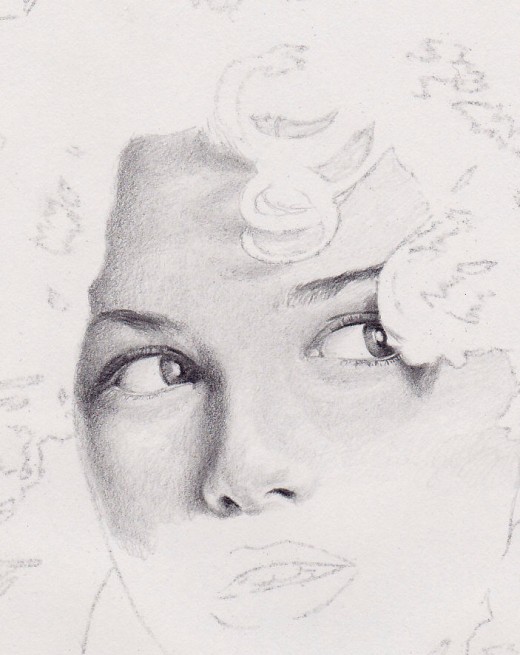
Skin Tones And The Features Of The Face
After the eyes are complete, you can start to shade in the skin around the features of the face. This will, of course, begin with the tones around the eyes. I’ve found it best to continue the tones through the nose. In many cases, depending on the pose, the tones around the nose actually help define it. The more profound the shade and contrast, the greater the definition of the nose (to say nothing of the other features of the face). Expect the necessity of frequent touch ups to the tones surrounding the features of the face. At least, until you become accustomed to the behavior of light reflected by skin. This may be particularly necessary if locks of hair fall over the forehead (as is the case with bangs or loose curls), or along the side of the face. I’ve found great convenience in holding off on the shading of the bottom portion of the face around the mouth until the mouth is completed. It seems (for me, at least) to cut down on the amount of adjustment necessary to account for the affect the mouth has on the contours of the face as I’m completing it.
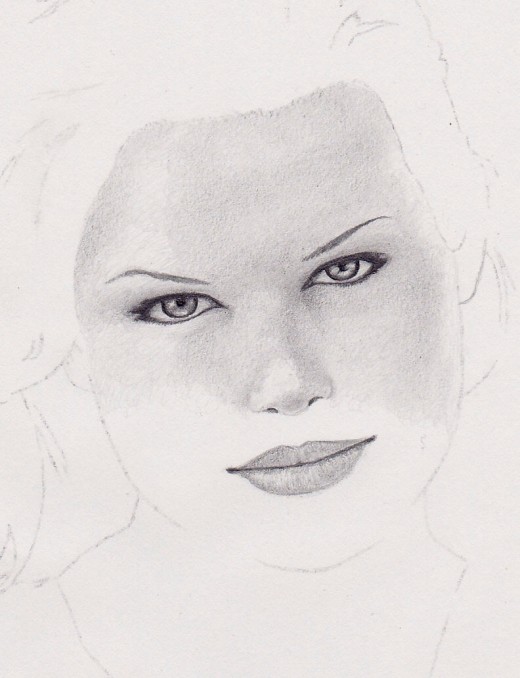
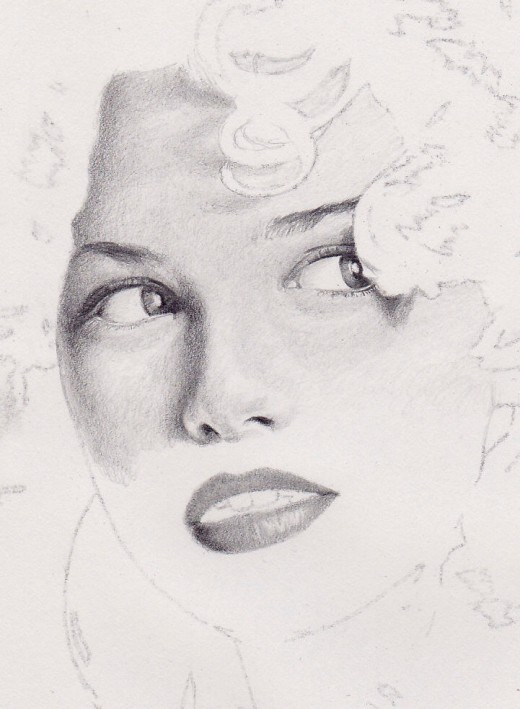
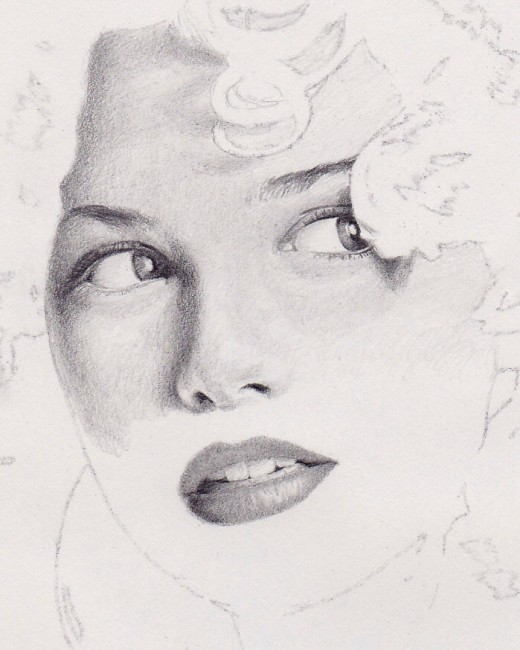
The Mouth
Here, I’ve found that outlining the mouth is particularly helpful with correctly positioning it on the face. The position of the features of the face can have every bit as dramatic an affect on the face as their shape. (This is particularly important if accuracy is an issue.) Once outline and position are worked out, whether the mouth is open or closed, principle drawing should begin with the lips. If the mouth is open, the appearance of the interior of the mouth will be affected by how wide it’s open. The lips should be shaded, as much as possible, with curved strokes, perpendicular to the line of the mouth. The curved strokes should be made with the bend outward from the point directly facing the viewer. The strokes should be made lighter or darker as is consistent with the texture, contour and highlights of the lips. If the mouth is open, after the lips are done, begin with the darkest areas in the back of the mouth, behind the teeth (or with as much of it as visible). After this area (including the tongue) is done, finish off with the teeth. (It is recommended to use the lightest grade of graphite possible for this.) Once the mouth is complete, the rest of the face and the ears (if they are visible) can be completed with fewer adjustments to the surrounding tones.
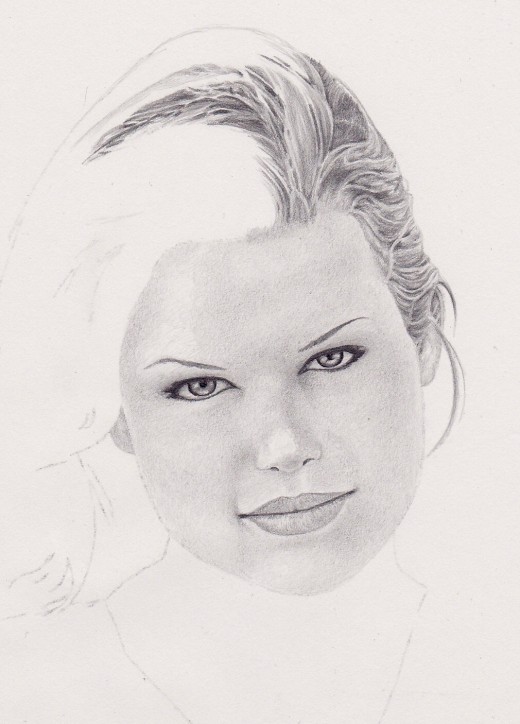
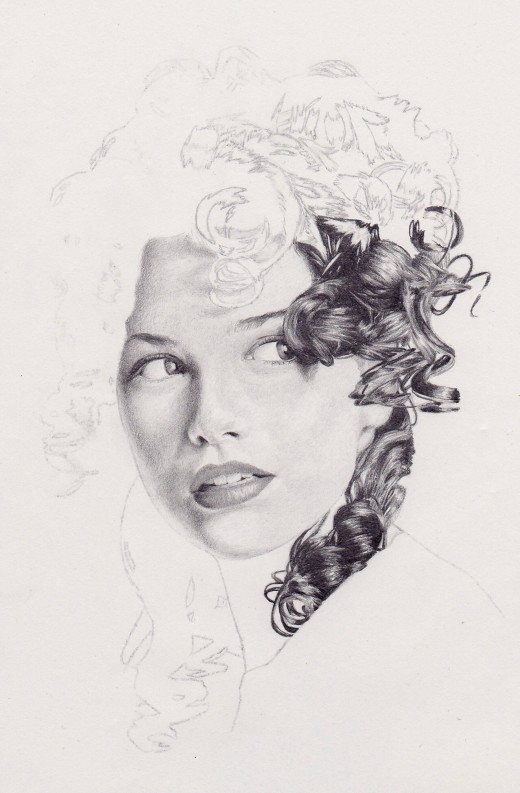
Hair
Once all the visible portions of the face are complete, it can be framed by the hair. I’ve seen a number of artists’ rendition of hair. What I’ve noticed in many of them is that, in their pursuit of detail, they get too caught up in the knowledge that hair is made up of individual strands. They focus on the portrayal of the strands at the cost of other details like color (which basically translates to ambient shade if you’re working in black and white), and highlights. In the time that I’ve spent drawing hair, I’ve discovered that color (or shade) and highlights are principle elements in the process. The rendition of these two elements with strokes consistent with the position, direction, and collective flow of the individual strands will, at the very least, suggest their appearance.
Now, once you’re prepared to start drawing the hair, consideration should be given to the lightness or darkness of the hair. This will dictate how you proceed. Before beginning principle drawing of the hair, certain outlines should be made depending on the appearance of the hair. If the hair is dark in color (dark brown or black), then the highlights should be outlined and the ambient color of the hair and the subsequent shades should be filled in around them. If the hair is light in color, then the shades should be outlined and the ambient color and highlights should be filled in around them. Now, it would be prudent to keep in mind that at any point between assembling the outline for highlights or shades, and completing the principle drawing, you may run into areas that are a little inconsistent with the general appearance of the hair. You should be prepared to shift gears at any time. Some areas might be better played be ear. There’s also the texture of the hair to be considered. Regardless of the color, the texture(curly, straight, fuzzy, bushy, etc.) can have dramatic affects on shades or highlights. The above described technique should serve even under varying textural circumstances. The only alteration that should be necessary is appropriate modification of the strokes for outlines, shades, and highlights for consistency with the flow of the hair.
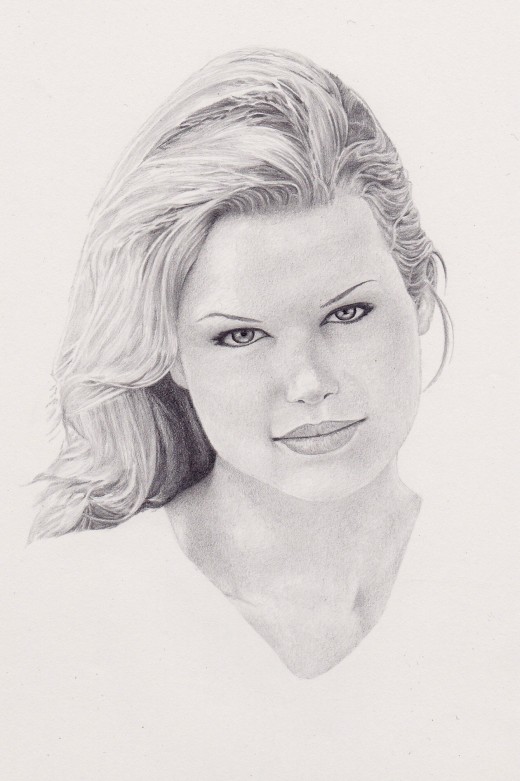
Finishing Up
For most portraits, after the hair is complete, there isn’t really that much left to do. Typically, for pencil portraits (of the face) all that remains is the neck area usually down to the collar bone (or, the bottom of the collar if the neck is covered by clothing). If the front collar of any clothing worn is open enough or the neck and shoulders are exposed, filling in that area as far as is desired should not be difficult or very time consuming. It might be helpful to mark out where the collar bone is (as well as any highlights on the skin) and moderate your shading appropriately.
